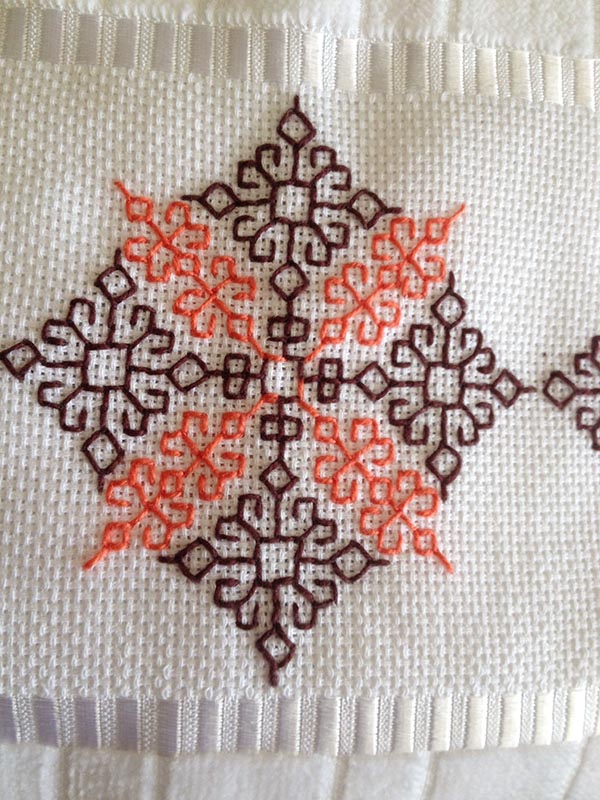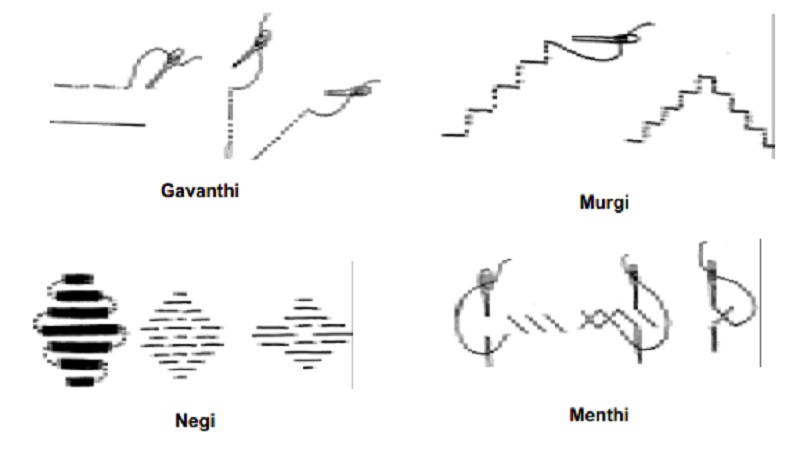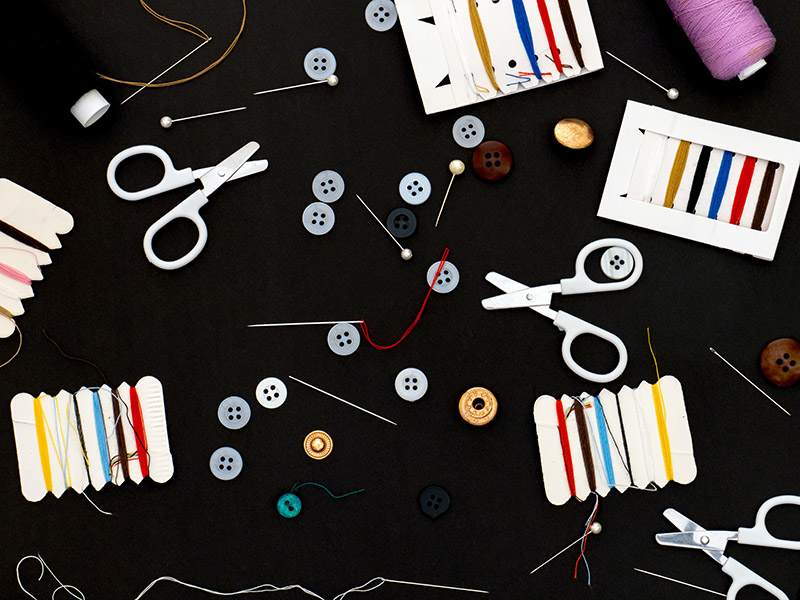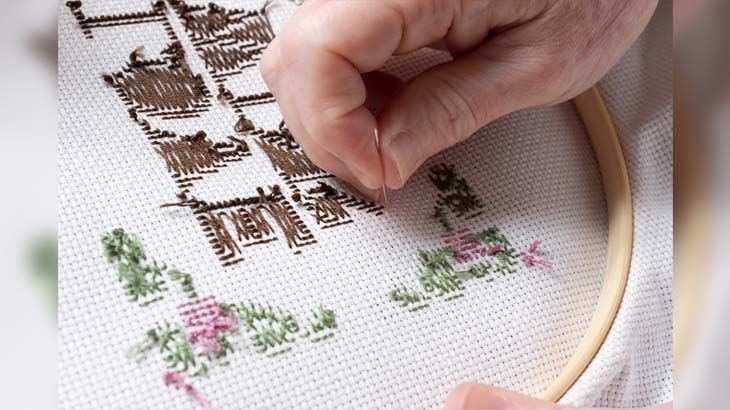
Types of Stitches in Kasuti Embroidery
Kasuti embroidery employs four primary types of stitches, each with its unique style and purpose:
Gavanti Stitch
-
- Description: 'Gavanti' means 'knot' in Kannada. This stitch is a double running stitch that can move in all directions: horizontal, vertical, and diagonal. It is often used to create geometric patterns that are symmetrical and look the same on both the front and back of the fabric.
- Use: Gavanti is commonly used to outline motifs and fill in shapes with a uniform appearance.

-
Murgi Stitch
- Description: The Murgi stitch resembles a ladder and is another form of running stitch. It is very similar to the Gavanti stitch but differs slightly in the execution, where the stitches are made in a ladder-like pattern.
- Use: Murgi stitch is often used to create intricate patterns that require precision, ensuring the design is neat and reversible.
-
Negi Stitch
- Description: 'Negi' means 'to weave' in Kannada. This stitch is used to create patterns resembling woven fabric, with long and short darning stitches that give a textured effect.
- Use: Negi stitch is ideal for filling larger areas with a woven appearance, adding texture and depth to the embroidery.
-
Menthi Stitch
- Description: 'Menthi' or 'Methi' refers to fenugreek, a reference to the small size of the stitches used. The Menthi stitch is a form of cross-stitching, creating tiny, precise crosses that form detailed patterns.
- Use: Menthi stitch is used for intricate detailing and often employed to create smaller, more delicate motifs within the larger design.
How to Stitch Kasuti Embroidery
Kasuti embroidery is unique because the design looks identical on both the front and back of the fabric. Here's a step-by-step guide to creating a Kasuti design:
-
Start with the Basics:
- Use a running stitch as your foundation, which will be the starting point for Gavanti and Murgi stitches.
- The stitches should be consistent in length to maintain symmetry.
-
Double-Run Stitch:
- For designs that require a double-run stitch (Gavanti), work the stitch in one direction first, then retrace your steps to create the double-run effect. This ensures the design is reversible.
-
Create Diagonal Lines:
- To form Murgi stitches, begin from the center of your design and work diagonally. Ensure the stitches on the front are horizontal while those on the back are vertical.
-
Add Complexity with Negi and Menthi Stitches:
- Use Negi stitch to fill in larger areas with a woven texture.
- Employ Menthi stitch for cross-stitch patterns, adding fine details to your design.
-
Final Touches:
- Complete the design by ensuring all lines are filled, and the design is symmetrical and balanced.
- Kasuti Embroidery patterns with Gavanti and Murgi stitches generally appear to be topstitched, but this would produce the same look on the front and back.
- Start from the running stitches with the front side along with the backside.
- To create double-run stitch style designs, the lines are created in multiple passes.
- In a single pass, each stitch usually goes in the same direction.
- The seam starts in the centre and forms a diagonal line of horizontal stitches known as Murgi stitches.
- On the back of the embroidery, the stitches are all vertical.
- After the diagonal line follows a row of normal runs, which are finally filled with more runs.
Materials Needed:
- Embroidery Hoop: Keeps the fabric taut, making it easier to work on.
- Needle: A sharp needle suitable for the thread and fabric you’re using.
- Embroidery Thread: Traditionally, silk threads are used, but you can also use cotton or other embroidery threads.
- Cotton Fabric: Kasuti is traditionally done on cotton, but it can also be performed on silk or other suitable fabrics.

Kasuti embroidery is not just a craft; it's a way to preserve and celebrate Karnataka's cultural heritage. With its rich history and intricate designs, learning Kasuti can be both a rewarding and creative experience.


.jpg)


).jpg)








